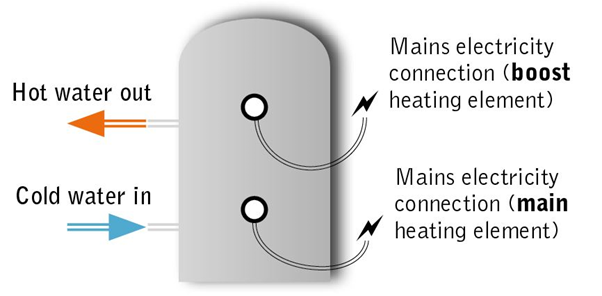Electric heaters
Electric heaters use electricity as the main energy source to heat your home. Electric radiators and night storage heaters are two common examples of electric heater.
Visit the energy saving trust’s website for more information on electric heating.
For all electric heaters, we advise you not to place anything on the heaters, including washing, due to fire risk.
Night storage heaters
Night storage heaters store up energy during the night, when electricity is cheaper, and then release it during the day.
Controlling your night storage heater
Two dial heaters:
The input control on your night storage heater tells the heater how much heat to store up during the night. The output controls how much of this stored heat is released.
At night, you can turn up the input and turn off the output to store heat. During the day you should turn the input to the lowest setting.
You should adjust the input depending on how much heat you need. The higher the input setting, the more heat will be stored and the more electricity it will use. If you set it too high for the size of the room it has to heat, or for the time of year, you will be wasting money.
To make the stored heat last the day, put your output dial on the lowest setting when you go to bed and for most of the day. If you get colder in the evening, you can turn the dial up higher to release the stored heat - just remember to turn it back down when you go to bed.
Watch this video for more information.
Digital control heaters:
These heaters have two switches on the wall next to them. One switch powers the heat storage. The other switch powers the heater's controls and the heat output.
For these heaters to work, both switches need to be on.
These heaters are set to heat up four times a day. If you are out of the house, you may want to change the settings so the heaters only come on in the morning and evening.
If you have a newer Dimplex Quantum heater, this video may be useful.
Solving issues with your night storage heater
Visit our Solve an issue page for more information on solving issues with your night storage heater.
Immersion heating
Immersion heaters are large tanks which heat water using electricity - this electricity can be from the mains or could be renewable electricity you have generated. Your immersion heater is separate to your central heating and radiators.
Controlling your immersion heating
You can use a timer to heat the water ready for when you need it. If you are on an Economy 7 tariff, you can set your timer to heat the water when electricity is cheaper.
If you do not use a timer, you will have two switches which control your immersion heater. One switch is for off peak, powering the lower, or main, element in your immersion tank. The other switch (sometimes marked water heater) powers the upper, or boost, element in your immersion tank. This diagram from CSE explains the two switches.
On an Economy 7 tariff, it is usually better to only use the boost switch if you run out of hot water, as it will cost more money to use.
Leaving your immersion heater on constantly will give you a constant supply of hot water but will cost you a lot of money.
If you can, set the thermostat on your heater to a lower temperature (but make sure your water is heated to a minimum of 60C once a week to prevent Legionella).
Solving issues with your immersion heating
Visit our Solve an issue page for more information on solving issues with your immersion heater.
Heating your home
For more information on heating systems, visit our Heating your home page.